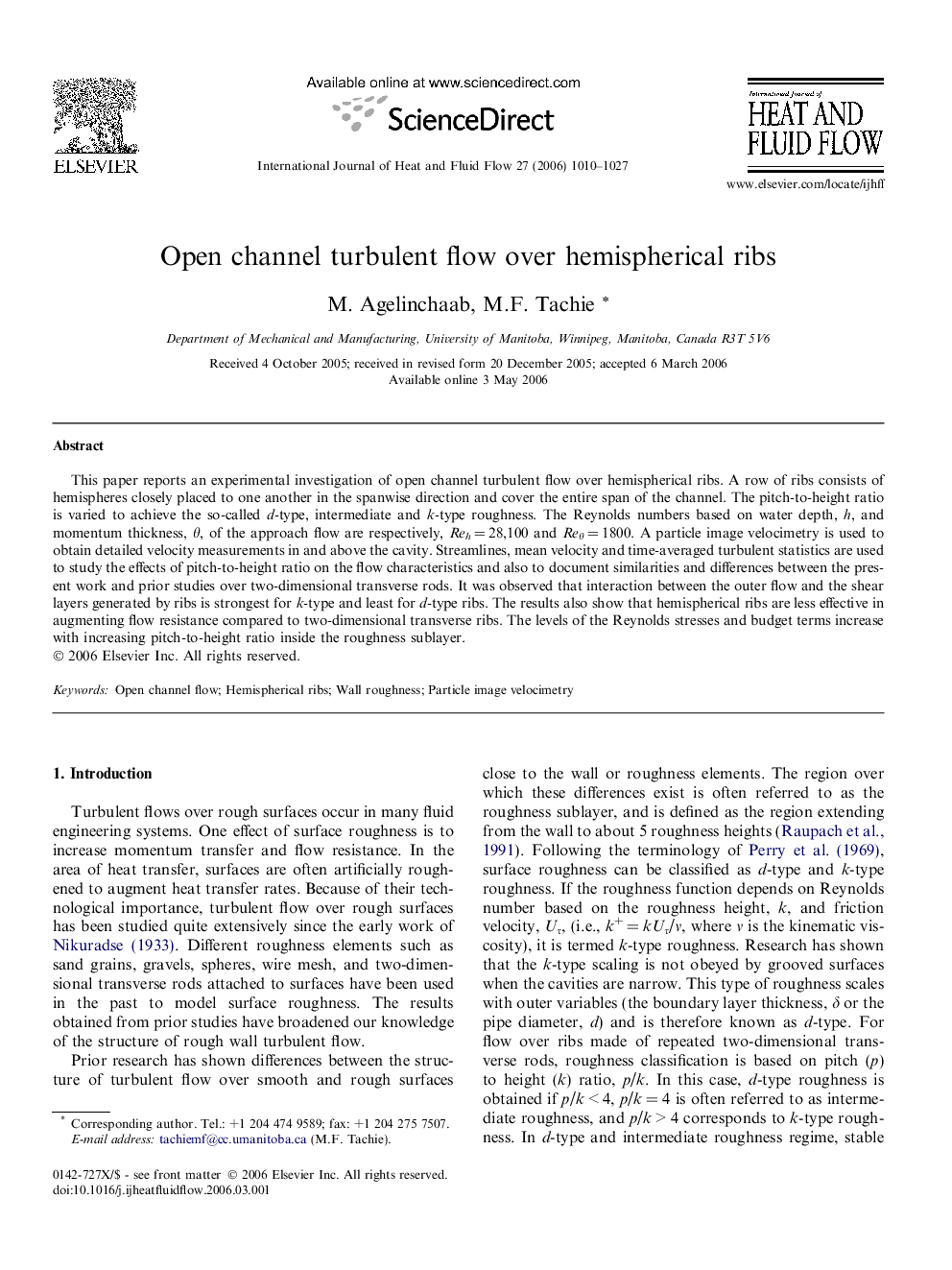| Article ID | Journal | Published Year | Pages | File Type |
|---|---|---|---|---|
| 656223 | International Journal of Heat and Fluid Flow | 2006 | 18 Pages |
This paper reports an experimental investigation of open channel turbulent flow over hemispherical ribs. A row of ribs consists of hemispheres closely placed to one another in the spanwise direction and cover the entire span of the channel. The pitch-to-height ratio is varied to achieve the so-called d-type, intermediate and k-type roughness. The Reynolds numbers based on water depth, h, and momentum thickness, θ, of the approach flow are respectively, Reh = 28,100 and Reθ = 1800. A particle image velocimetry is used to obtain detailed velocity measurements in and above the cavity. Streamlines, mean velocity and time-averaged turbulent statistics are used to study the effects of pitch-to-height ratio on the flow characteristics and also to document similarities and differences between the present work and prior studies over two-dimensional transverse rods. It was observed that interaction between the outer flow and the shear layers generated by ribs is strongest for k-type and least for d-type ribs. The results also show that hemispherical ribs are less effective in augmenting flow resistance compared to two-dimensional transverse ribs. The levels of the Reynolds stresses and budget terms increase with increasing pitch-to-height ratio inside the roughness sublayer.
